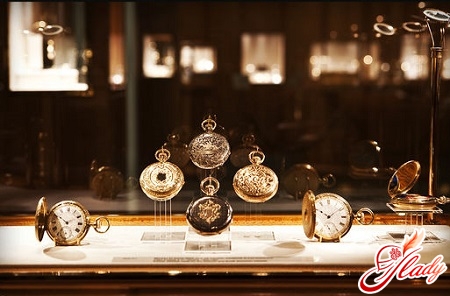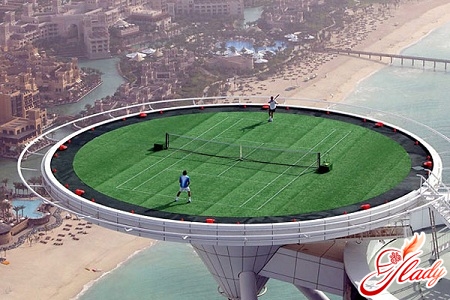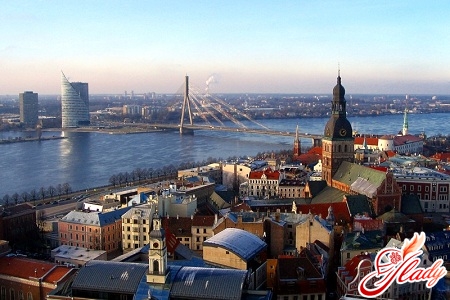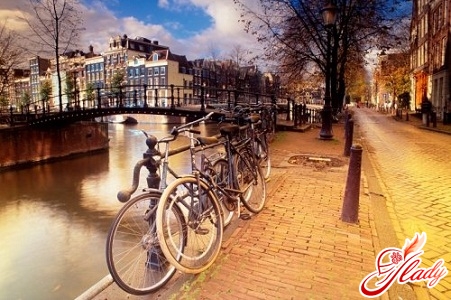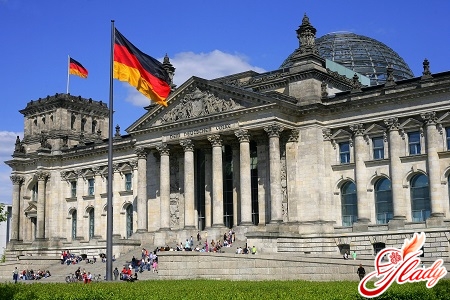
Germany attracts tourists from all over the worldthe ancient culture of Bavaria, the picturesque Rhine Valley with its medieval monasteries and castles, the quiet Baltic coast, the picturesque Black Forest and a large number of historical monuments. Southern Germany is known for its crystal clear lakes and ski resorts in the foothills of the Alps, as well as its wines, the production centers of which are located along the river valleys in the southern regions of the country. Obviously, in order to describe in all their splendor all the sights of Germany, which they undoubtedly deserve, several volumes of books will be needed. And tourists today are divided into certain types: some like active extreme tourism, some are delighted by ancient buildings and museums, some prefer to attend folk festivals and festivities, wanting to plunge headlong into the whirlpool of national traditions and culture of the country. Everyone has different needs and different interests. But each place, be it a street, a village, a city or a country, has its own memorable places, its own "calling cards" by which you can recognize them, remember them and love them. It is impossible to list absolutely all the sights of Germany, but the brightest, most important and memorable of them, worthy of the attention of any tourist, will be covered in this article.
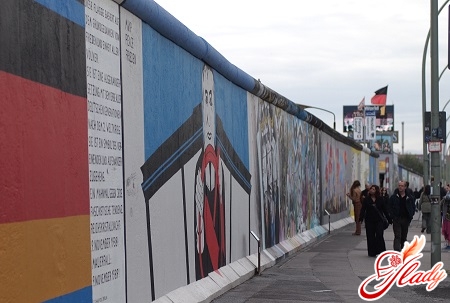
The Berlin Wall is a symbol of the Cold War
The capital of Germany is Berlin.is a city with a rich cultural heritage, with incredible architecture, theaters, museums, galleries. But many tourists primarily associate it with the infamous Berlin Wall. The concrete fence, the height of which exceeded 3 m, with barbed wire, stretching for 160 km, was not just a border between two different Germanys, in one night it separated thousands of families for 28 long years. The Berlin Wall was built in 1961, the consequence of which was the division of Berlin and all of Germany into two parts: Western and Eastern. Absolutely all attempts to get "to the other side" were brutally suppressed. During such attempts, according to various sources, from 190 to 1200 people died. Finally, in 1990, the wall was destroyed. This event thundered throughout the world, in all corners of our planet they talked about the reunification of families, the city and the whole country. In a very short time, not a single brick remained from the once mighty border, only a fragment of it remained - a section a little more than a kilometer long - as a reminder of the Cold War. Many tourists go to Berlin just to see at least the ruins of this structure with their own eyes. Standing next to this fragment, you will have the opportunity to feel the emotions of hundreds of thousands of people, their hopes and despair, which were associated with this wall.
Museum Island in Berlin
One of the most fascinating places in the Eastpart of Berlin is the museum island Spreeinsel in the middle of the Spree River, connected by bridges to the mainland. There are five museums here: the New Museum, the Old Museum, the Bode Museum, the Pergamon Museum and the Old National Gallery. But the most attractive for most tourists is the Cathedral, built in the unique style of the Italian Renaissance. This architectural monument is relatively young - its construction was completed in 1905. Its central part, crowned with a massive dome, is 98 meters high, and on both sides it is adjoined by a pair of side naves with chapels. Organ concerts are often held in this cathedral.
The symbol of Berlin is the Brandenburg Gate
Another famous landmarkcity stands on Paris Square and is a symbol of the capital of Germany. This is the Brandenburg Gate. They were erected in 1791 by order of Friedrich Wilhelm II. They evoke the spirit of the time when one could solemnly enter the famous capital under a majestic arch. The Brandenburg Gate consists of a dozen mighty columns, executed in the Doric type, on which a rectangular pediment is placed, which is crowned by a quadriga with the goddess of Peace sitting on a chariot, driving four horses.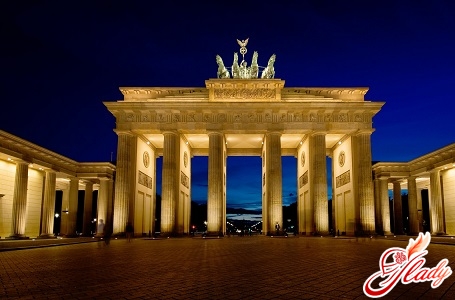
The summer residence of the Bavarian monarchs - Hohenschwangau Castle
Hohenschwangau Castle is considered one ofof the most beautiful castles in Bavaria. It is located in the village of Schwangau in southern Germany and is the residence of the Wittelsbach dynasty. This castle was built in the Romantic era of the mid-19th century. From the moment of its foundation, this estate became the summer residence of the royal family. They held ceremonial receptions there, relaxed, and were alone with nature. Gradually, the castle turned into a hunting residence for the royal dynasty. To this day, Hohenschwangau Castle has preserved its original appearance, created with the help of a unique Biedermeier design, which is typical for the era of castle construction. The interior amazes with its decoration and beauty. The predominant colors are lilac and purple. The walls of the interior are decorated with paintings. The outer part of the building is painted sand color and decorated with bas-reliefs. Harmoniously blending into the local landscape, the castle rises above the Swan Rock (Schwanstein) on Mount Tegelberg and transports you back to the Middle Ages. You instantly get the illusion of their lavish balls, knightly tournaments, beautiful music, honoring the monarch and the luxury of that time. Since 1913, Hohenschwangau Castle has been a museum and is open to tourists. The first thing that immediately catches your eye when you enter the courtyard of the estate is a small fountain in the shape of a swan. Looking around the area, you can see that the swan theme is present everywhere. King Ludwig loved them, these noble birds, since childhood, so you will find swans everywhere in the vicinity of the castle: the birds are present in the garden, the walls of the rooms are decorated with images of swans; candelabra, door handles, chairs, tables, figurines are also made in the shape of these beautiful birds. As before, the castle remains the property of the Wittelsbach family. Every year, more than 300 thousand tourists from different countries come to see it.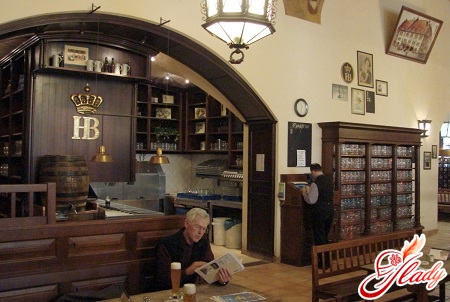
Sights of Munich - the medieval pearl of Bavaria
Munich is an ancient city that takesIts origins date back to the 8th century, and its first inhabitants are considered to be the Tegernsee monks. Munich was first mentioned in official documents in 1158, and in 1175 it received the status of a city. The Bavarian capital is famous primarily for its beer, which is produced by six city breweries according to ancient recipes; most tourists go to Munich to see its unique attractions, which include medieval architectural ensembles, Gothic and Renaissance architectural structures, castles and palaces, picturesque parks and numerous museums. The world-famous Hofbräuhaus beer hall Especially for those who certainly associate Bavaria with beer, there is an opportunity to visit the ancient Hofbräuhaus beer hall, founded in 1589 and which has become not only the main attraction of Munich, but also played an important role in history. It was here in 1923 that the famous beer putsch took place, which resulted in Hitler's political career going up. In the beer bar you can try real Bavarian beer, and on the second floor you can taste the best dishes of national cuisine. The biggest beer festival And, naturally, we cannot fail to mention the famous and most popular international festival - Oktoberfest, which takes place right here, in the beer capital of Bavaria. The very name of the festival suggests that the time for this holiday comes in the fall. Around the third Saturday of October, tourists and beer lovers from almost all over the world gather in Munich to unwind, have fun, walk, make new friends and, of course, taste the intoxicating drink. The festival lasts almost two weeks, during which about 6.5 million liters of beer are drunk.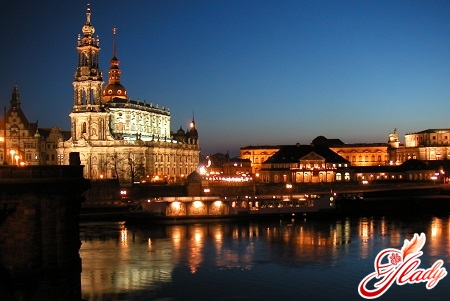
Magical Dresden - a city reborn
It would probably not be an exaggeration to call thisSpread out on the banks of the Elbe River, this wonderful city is the cultural capital of Germany. Surprisingly, Dresden is also the largest industrial center. Walking along the streets of this city, you never cease to be amazed at how harmoniously the majestic architectural monuments and powerful industrial enterprises are combined. Why is Dresden considered unique in its kind? It is probably unknown, but for some reason it is here that tourists who have visited Germany rush first of all in order to enjoy the beautiful landscape of "Florence on the Elbe" - this is the name of the city that has often been encountered and is still encountered in the literary works of great German classics. This city has an incredible and rich history, which you can soak up by visiting museums and contemplating the sights of Dresden. The city, like most others, has two parts: "old" and "new". Do not doubt that any guide will advise you to visit "old" Dresden. There you will be able to see the world-famous Zwinger Palace, which houses the Dresden Picture Gallery. The best viewing platform in Dresden is considered to be the Hausmannstrum tower. Next to the Zwinger is the Residence Castle, built in the 13th century and a museum complex. Every opera connoisseur knows the Semper Theater on Theaterplatz, the unique acoustics of which are highly valued by both listeners and the greatest artists of our time. Dresden has many cathedrals, which are real works of architectural art. These include: the Cathedral, the Church of the Cross, the Synagogue, the Church of St. Simeon the Wonderful Mountaineer.
Neuschwanstein Castle - the estate of a mad monarch
On the Bavarian Alps, sung by musicians, nearOn the very border of Austria, Neuschwanstein rises majestically - the embodiment of romantic phantasmagorias and dreams. The mysterious surrounding view enhances the impression of the theatricality of this castle, which seems to have floated out of the past into our world. Neuschwanstein Castle is deservedly included in the list of the great castles of the world, since very few buildings can compare with its enchanting magnificence. This is exactly what the unsociable misanthropic king Louis II wanted, whose bizarre fantasies were embodied in the decoration of the castle, its architecture and landscape design. Since the end of the 19th century, the castle has become incredibly popular with tourists. Of course, the work of the eccentric king is a true masterpiece! Modern Bavarians are very grateful to the strange monarch, even though he liked to dine ... with the ghost of Louis XIV.
Bremen - a fairytale city in Germany
On the romantic banks of the Weser River liesthe city of Bremen is a relatively small, but very rich in attractions and picturesque city in the northern part of the country. It was founded in 787 by Charlemagne. The once popular prosperity and wealth of merchant Bremen is felt to this day. Perhaps the best proof of local wealth is one of the most beautiful European squares - the Market Square of the Old Town. Here are located both fabulous medieval houses of city nobles, and ancient cathedrals, and sculptures with historical monuments. But the hallmark of the square is considered to be the Bremen Town Hall. Today this building is occupied by the local Senate. Not far from the Town Hall there are two magnificent monuments: the world-famous Bremen Town Musicians and the statue of the Guardian of the City Roland, reaching 10 m in height. The impression of a medieval fairy tale is enhanced by the Cathedral of St. Peter, erected in the distant 11th century. The Market Square is adjacent to an entire old quarter with picturesque narrow streets. This place is called "Schnoor", musicians, artists and craftsmen have lived here for a long time. And the name of the place comes from the word "cord" - the houses are so tightly pressed against each other, as if they were specially strung on a cord. In this quarter you can find cute shops with antiques and various trinkets, art galleries, great local cafes, which prepare amazingly delicious Bremen dishes from high-quality products.
Pantheon of Great Germans - Valhalla
One of the most interesting and majestic placesin Germany is located near the city of Regensburg and is called Walhalla. On the high bank of the Danube rises a monumental building, maintained in the best traditions of ancient architecture. The temple of white marble lowers its stairs to the river and seems to lure people to the eternal, heroic, sublime. Perhaps, Walhalla is the most powerful, most beautiful monument to the majestic history of the state. In its original meaning, Walhalla is the place where heroes and demigods go after death. On the day of the opening of the pantheon, October 18, 1842, King Ludwig I said that this monument should remind Germans, wherever they live, of the fact that they have one homeland and one history to be proud of. Here are located busts and memorial plaques of those individuals who in one way or another influenced German culture (among the busts there is even one belonging to the Russian Empress Catherine II!).






